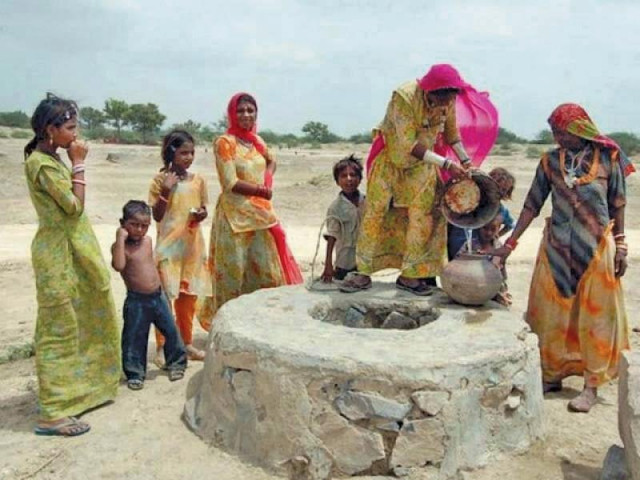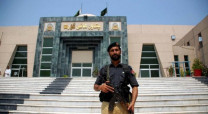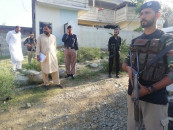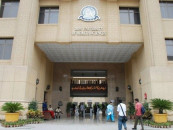It’s time to get serious about climate change
15% of the total GDP of Sindh is being lost yearly due to environmental degradation and climate change

Sindh is facing an extreme weather pattern: waves of cold weather, dryness, continuous floods and extreme rainfall. The impact of climate change has disturbed social, economic and political conditions of people across the province in urban and rural areas. With people in rural areas relying, on agriculture or livestock, and environmentalists confirming that continuous floods and droughts have affected both sectors, lives are becoming tougher for them.
The extreme droughts in Tharparkar, Achhro Thar, Nara, Kohistan, Kachho and the coastal belt have been wrought largely by climate change.

“Dry conditions in Sindh aggravate the already pathetic condition,” said the United Nations World Meteorological Organisation’s special envoy, Dr Qamaruz Zaman Chaudhry. Chaudhry, who is the former director general of Pakistan Meteorological Department, seems worried about the extreme rainfall in Sindh. “We had one month’s rain in 2011 which was equal to five years. Its volume could fill up the equal of five Tarbela dams,” he added.
“The tropical cyclones have also affected Sindh with an increasing frequency over the last 20 years,” Chaudhry said, adding that cold waves is another impact of climate change in Sindh. “It’s an indirect impact of the climate change,” said assistant professor of the Geology Department of University of Sindh, Dr Akhtar Ali Dahir Hakro, as news of Cyclone Nilofar emerged. “These cyclones develop because of the tectonic effect,” he added.
Climate change impact is being observed since 1999 cyclone that badly hit its entire population. The subsequent year an earthquake followed with extreme rains in 2005. This led to a food crisis. This drought continued till floods in 2010 which badly affected the right bank of the Indus River.
“The entire population is under pressure, especially economically,” commented Tando Jam Agriculture University’s Professor Mohammad Ismail Kumbhar. “It has disturbed the overall condition of livelihood.”
The dry weather has ruined agriculture. According to Prof Kumbhar, crops like wheat and rice; fruits such as bananas and mangoes, and vegetables like chillies are damaged. He pointed out that Sindh produces 90 per cent banana and 87 per cent chillies of Pakistan’s total produce of these crops.
“We don’t have the exact assessment of how much is lost and what its impact will be in the coming years,” commented Prof Kumbhar, talking of the vulnerability caused by climate change.
With reference to the World Bank’s recent studies, Nasir Panhwar, an environmentalist, says 15 per cent of the total GDP of Sindh is being lost yearly due to the environmental degradation and climate change.
“Sindh is the lower riparian. Both dry weather and floods will hit Sindh,” Panhwar says. He says that 65 per cent of Sindh’s area is arid [drought prone]. “The people in this area completely rely on rainfall and one can imagine the situation if there is no rain for years.”
The availability of water in rural areas, especially in Tharparkar, Kohistan and Kachho, is very critical. According to Panhwar’s study, the people living in Kachho used to get water from only as deep as 30 feet till about 10 years ago. “The water level has gone down gradually and one can hardly get water even from 500 feet,” he maintained.
People from drought-prone areas are migrating to cities, increasing the load on urban areas, especially on infrastructure and consumption of water. Environment journalist Amar Guriro said, “Almost 1.5 million people from drought-prone areas of Sindh migrate annually”.
Guriro mentioned that 71 per cent of Sindh’s population has no access to food, citing figures from the National Nutrition Survey of Pakistan in 2011. He believes the shortage of portable water in Karachi is the result of climate change which will just get worse. “Big cities, like Karachi, also rely on rural areas from where they get water, vegetables, fruits, wheat, rice and livestock. If rural areas face vulnerable situations, it means mega cities will be under pressure too.”
Published in The Express Tribune, November 1st, 2014.


















COMMENTS
Comments are moderated and generally will be posted if they are on-topic and not abusive.
For more information, please see our Comments FAQ